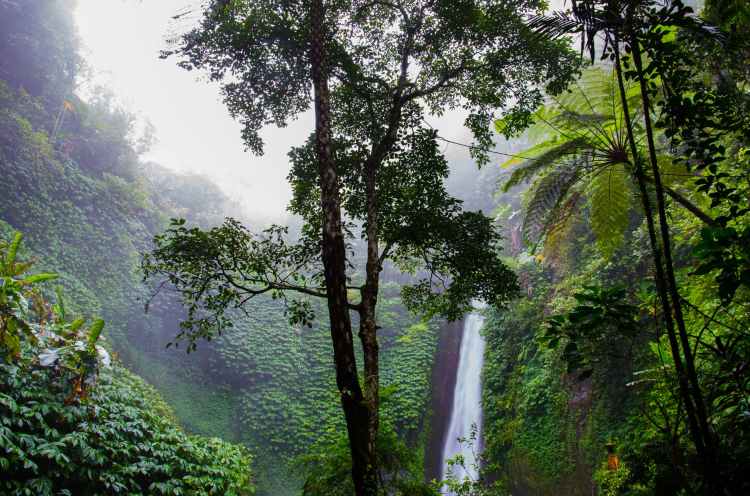Rain forests play an invaluable role in sustaining life, but every year, large portions of them are cut down for logging, mining, and cattle ranches.
The rain forest is made up of four layers: emergent, upper canopy, understory, and forest floor. Emergent trees grow far apart and tall, their branches reaching above the canopy. The upper canopy houses most of the rain forest’s animal species, and forms a roof that blocks most light from reaching below it. The understory, usually shaded and home to bushes and shrubs as well as the branches of canopy trees. The forest floor is in complete shade, meaning there is little likelihood of plants growing there and making it easy to walk through the forest.
DEFORESTATION
Recently, deforestation has reduced the amount of rain forest present around the globe.
In Brazil, which houses about a third of the remaining tropical rain forestson Earth, more than 19 percent of the Amazonian rain forests were lost to deforestation since 1970, when only 2.4 percent of the rain forests there had been cleared.
Biologists worry about the long-term consequences. Drought may be one. Some rain forests, including the Amazon, began experiencing drought in the 1990s, possibly due to deforestation and global warming.
Efforts to discourage deforestation, mainly through sustainable-logging initiatives, are underway on a very limited basis but have had a negligible impact so far.
WHY “RAIN” FORESTS?
The rain forest is nearly self-watering. Plants release water into the atmosphere through a process called transpiration. In the tropics, each canopy tree can release about 200 gallons (760 liters) of water each year. The moisture helps create the thick cloud cover that hangs over most rain forests. Even when not raining, these clouds keep the rain forest humid and warm.
BENEFITS OF RAIN FOREST PLANTS
The environment of rain forests is ideal for plants: An estimated two-thirds of the world’s plant species grow in the rain forest.
Plants in the rain forest grow very close together and contend with the constant threat of insect predators. They have adapted by making chemicals that researchers have found useful as medicines. Bioprospecting, or going into the rain forest in search of plants that can be used in foods, cosmetics, and medicines, has become big business during the past decade, and the amount that native communities are compensated for this varies from almost nothing to a share in later profits.
The National Cancer Institute (NCI)estimates that 70 percent of the anti-cancer plants identified so far are rain forest plants. A new drug under development by a private pharmaceutical company, possibly for treating HIV, is Calanolide A, which is derived from a tree discovered on Borneo, according to NCI.
Many trees and plants, like orchids, have been removed from the rain forest and cultivated. Brazil nut trees are one valuable tree that refuses to grow anywhere but in undisturbed sections of the Amazon rain forest. There, it is pollinated by bees that also visit orchids, and its seeds are spread by the agouti, a small tree mammal.
